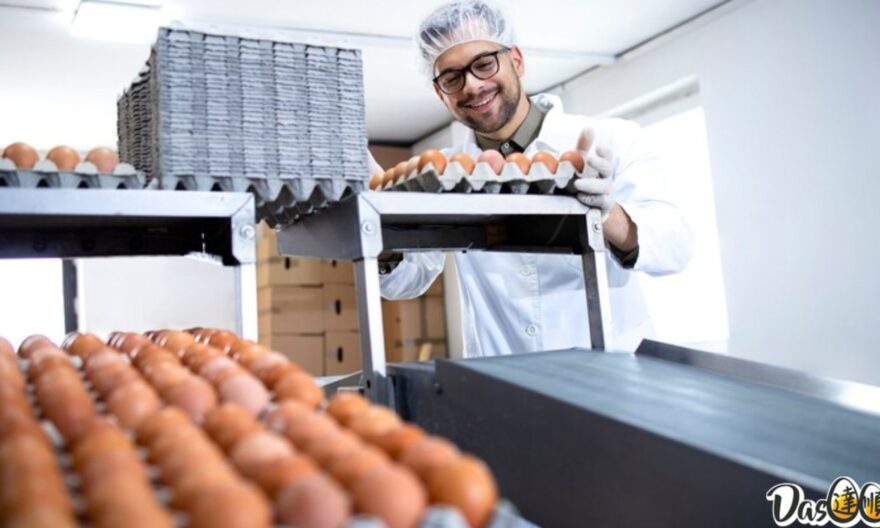
People are always seeking methods to save time and simplify their lives in the fast-paced world of today. Offering pasteurised liquid eggs, which are becoming more and more well-liked as a secure and practical substitute for fresh eggs, is one approach to do this. The definition of pasteurized liquid eggs, their production process, advantages, and practical advice for utilising them in recipes are all covered in this article.
What Exactly Are Pasteurised Liquid Eggs?
Eggs that have been pasteurised to eliminate any potentially hazardous germs makeup pasteurised liquid eggs, which are safe to eat raw. Fresh eggs are cracked and then processed to eliminate contaminants to create the liquid eggs. The egg whites and yolks are then combined and pasteurised, depending on the manufacturer’s recommendations, at a temperature of at least 140°F for 3.5 minutes or at a higher temperature for less time. After being pasteurised, the liquid eggs are next packed, ranging in size from tiny cartons to bulk containers, and refrigerated.
Microorganisms in Egg Liquid
Unsterilized egg liquid is most typically discovered to contain E. coli. However, Salmonella and Staphylococcus are also regularly observed. When compared to clean eggshells, the detection rate of Salmonella from chicken dung is much greater. Therefore, the first stage in the production of egg liquid requires us to wash and soak the eggs. The highest frequency of microbe detection occurs in the egg liquid collecting tank that comes after the egg breaker/beater.
Salmonella may survive at temperatures as low as 10°C and as high as 36.6-37.6°C. Hence egg liquid should be maintained at or below 5°C. There are over 900 different types of salmonella. Salmonella multiplies slowly in egg whites and fast in yolks. The best pH range for growth is between 6.5 and 7.5; at pH values of 9 or below, growth cannot occur. Salmonella must be eliminated since it is the main source of food poisoning in egg liquid.
Introduction to the Liquid Egg Pasteurisation Process
1. Pasteurization of Whole Liquid Eggs
Whole egg liquid is pasteurised at a temperature of 4°C after being heated to 60°C, held there for 3.5 minutes, and then cooled to 4°C. The functional qualities of the whole egg liquid in food items can typically be preserved after pasteurisation. Under these circumstances, harmful bacteria can all be eliminated, and the number of bacteria in the egg liquid can be minimised.
2. Pasteurization of Egg Yolk
Salmonella is the principal harmful bacterium found in egg yolks. This bacterium is more heat resistant in egg yolk than in egg white or entire egg liquid. This is because egg yolks have a lower pH value. Salmonella is not heat-sensitive in low pH environments, and egg yolks have a high level of dry matter. Egg yolks are therefore pasteurised more thoroughly than entire eggs and egg whites. The most popular technique of pasteurising egg yolks involves heating the yolks from 4°C to 6°C, maintaining the temperature for 3 minutes, and then lowering the temperature to 4°C.
3. Pasteurization of Egg White
Egg white pasteurisation calls for more delicate handling since the protein in egg white is more prone to heat denaturation, which results in the loss of functional characteristics. The egg white can be heated to 56°C, held at that temperature for three minutes, and then cooled to 4°C.
What Advantages Do Pasteurised Liquid Eggs Have?
The advantages of pasteurized liquid eggs make them a common option for both residential and commercial kitchens. Here are a few of the main advantages:
1. Comes with Convenience
It is simple to utilise liquid eggs since they don’t need to be cracked, separated, or whisked. It is simple to divide out the precise amount required for a recipe because they are packaged in pre-measured containers.
2. Versatility In Utilization
From quiches and baked products to scrambled eggs and omelettes, liquid eggs may be utilised in a variety of dishes. In the majority of recipes, they may be used in place of whole eggs, egg whites, or egg yolks.
3. Safe To Eat
Liquid eggs that have undergone pasteurisation to eliminate potentially hazardous pathogens like Salmonella are safe to consume. They are a wonderful choice for those who are worried about food safety because of this.
4. Longer Shelf Life
Due to pasteurisation, liquid eggs have a longer shelf life than fresh eggs. This makes them a wonderful alternative for busy kitchens that need to have a supply of eggs on hand because they can be kept in the refrigerator for a number of weeks.
5. Minimization Of Waste
Because liquid eggs may be used in lower amounts than fresh eggs, they decrease waste. As a result, there is a lower likelihood of eggs spoiling or being discarded.
How Should Pasteurised Liquid Eggs Be Used in Recipes?
Your recipes will be simple and practical to make with pasteurised liquid eggs. They don’t need to be cracked or separated because they are already liquid, which saves you time and effort. They may be used in any egg-based cuisine, including scrambled eggs, omelettes, quiches, frittatas, and baked goods like muffins, cakes, and cookies. Use the same quantity as you would for fresh eggs when replacing pasteurised liquid eggs with them, and make any necessary recipe adjustments to take into account any variations in texture or flavour.
Conclusion
Fresh eggs are a handy and safe option, but pasteurized liquid eggs provide a number of advantages over them, including greater safety, a longer shelf life, and simplicity of usage. They are perfect for commercial settings, such as restaurants and bakeries, because they can be used in a number of recipes, even some that call for raw eggs. Consider including pasteurised liquid eggs in your product selection if you’re searching for a high-quality and secure egg product to give your consumers. And for that, you can trust Dasoon, one of the best wholesale egg distributors, which brings pasteurized liquid eggs with a range of Whole Eggs, Egg Yolk and Egg white. It is safe, hygienic and easy to use.
Also check: Effective Acne Treatments to Clear Skin Ahead




